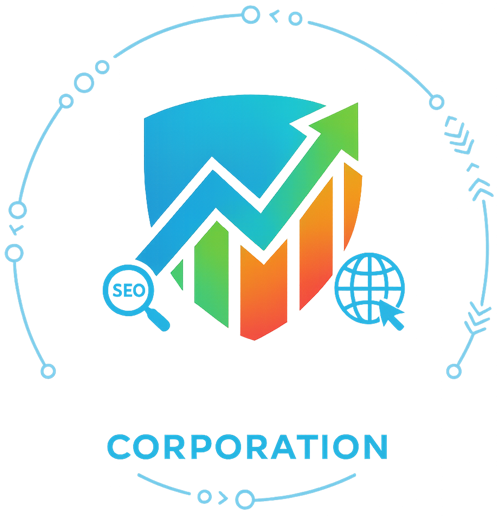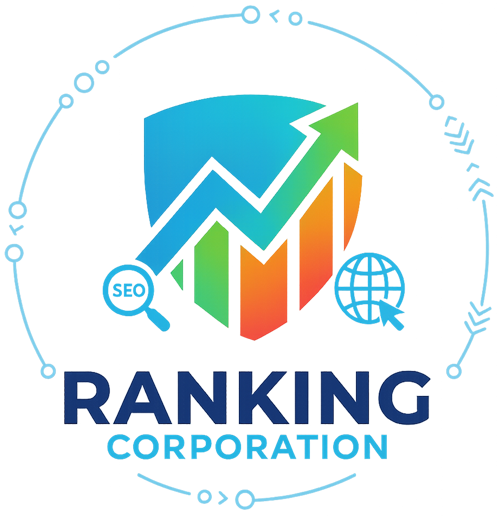
Introduction
In the digital age, understanding your audience’s search intent is no longer optional—it’s a necessity. Predictive search intent, powered by artificial intelligence (AI), allows marketers, SEO specialists, and businesses to anticipate what users will search for and optimize content accordingly. By leveraging AI tools, brands can create hyper-relevant content, increase engagement, and drive higher conversions. In this comprehensive guide, we’ll explore predictive search intent, its significance, how AI facilitates it, and actionable strategies to harness it effectively.
- Understanding Predictive Search Intent
1.1 What is Search Intent?
Search intent, also known as user intent, refers to the reason behind a user’s online search. Essentially, it answers the question: “What is the searcher really looking for?” Search intent can be classified into three main types:
- Informational Intent: Users seeking knowledge, answers, or insights.
- Navigational Intent: Users looking for a specific website, brand, or page.
- Transactional Intent: Users intending to purchase or complete a conversion-related action.
1.2 Evolution of Predictive Search
Traditional SEO focused primarily on keywords. However, modern search engines prioritize understanding the why behind searches. Predictive search intent leverages AI and machine learning algorithms to anticipate user behavior before a search is even fully formed, enabling proactive content strategies.
1.3 Why Predictive Search Intent Matters
- Enhances content relevance.
- Improves organic search rankings.
- Reduces bounce rates and increases dwell time.
- Drives higher conversion rates.
By predicting search behavior, brands can deliver the right content at the right time, improving both user experience and business ROI.
- How AI Drives Predictive Search Intent
2.1 The Role of AI in SEO
AI uses vast datasets to analyze search patterns, identify trends, and understand user preferences. Through natural language processing (NLP), AI interprets context, semantics, and sentiment, allowing marketers to target users more effectively.
2.2 Key AI Tools for Predictive Search
Several AI-powered tools are revolutionizing how marketers approach search intent:
- ChatGPT & GPT-based tools: Generate content tailored to predicted search queries.
- Surfer SEO & Clearscope: Optimize content using AI insights about keyword clusters and intent.
- MarketMuse: Identifies content gaps and recommends topics aligned with predictive intent.
- Frase: Combines AI research and content optimization for intent-driven writing.
- SEMRush & Ahrefs AI modules: Provide predictive keyword analysis and trend insights.
2.3 Machine Learning Models in Predictive Search
Modern predictive algorithms rely on machine learning to analyze search data over time. Key models include:
- Supervised Learning Models: Trained on historical search data to predict future trends.
- Unsupervised Learning Models: Identify hidden patterns in search behavior without labeled datasets.
- Reinforcement Learning: Continuously adapts content strategies based on user interaction feedback.
- The Mechanics of Predictive Search Intent
3.1 Analyzing User Behavior
AI tools can detect patterns in:
- Query phrasing
- Search history
- Click-through rates
- Bounce rates
- Engagement metrics
3.2 Semantic Search & NLP
Search engines now focus on semantic meaning rather than exact keyword matches. NLP algorithms help AI tools understand:
- Synonyms and related terms
- Question-based searches
- Contextual intent
3.3 Predictive Keyword Research
AI-driven predictive keyword research allows marketers to:
- Forecast trending searches
- Anticipate seasonal or event-driven queries
- Prioritize high-value long-tail keywords
Example: Predicting searches for “best AI tools for content marketing” before the phrase becomes widely popular can help a brand rank early.
- Crafting Content for Predicted Intent
4.1 Content Mapping
Map predicted intent to content types:
| Intent Type | Content Type | Example |
| Informational | Blog posts, guides, tutorials | “How AI Predicts Search Intent” |
| Navigational | Landing pages, resource hubs | “OpenAI GPT-5 Mini Overview” |
| Transactional | Product pages, service pages | “Buy AI SEO Tools Subscription” |
4.2 Using AI for Content Creation
AI content tools can generate predictive content by:
- Drafting blog outlines based on anticipated queries
- Suggesting FAQs and subtopics relevant to intent
- Enhancing semantic richness and NLP alignment
4.3 Optimizing for Featured Snippets
Predictive intent analysis helps create content optimized for Google’s rich results:
- Direct answers to common questions
- Structured lists and tables
- Step-by-step guides
- Leveraging Data Analytics for Predictive SEO
5.1 Behavioral Analytics
By studying user behavior through analytics platforms, AI can forecast likely searches, for instance:
- Pages with high engagement may indicate interest in related topics
- High bounce rate pages highlight content gaps or mismatched intent
5.2 Trend Analysis
AI tools can predict trending topics using:
- Google Trends integration
- Social media monitoring
- Historical search pattern analysis
5.3 Competitor Analysis
AI-driven competitor analysis identifies gaps in competitors’ content strategies and predicts areas where your content can outperform them.
- Implementing Predictive Search Intent Strategy
6.1 Step 1: Audit Existing Content
- Identify content gaps
- Determine which pages align with transactional, informational, or navigational intent
- Use AI tools to assess content performance
6.2 Step 2: Keyword Forecasting
- Use AI tools to predict emerging keywords
- Segment by intent type
- Focus on high-opportunity long-tail keywords
6.3 Step 3: Content Creation & Optimization
- Draft content based on predicted intent
- Optimize using NLP and semantic SEO
- Implement structured data for rich results
6.4 Step 4: Monitoring & Refinement
- Track performance metrics
- Refine content based on engagement patterns
- Continuously update AI models with new search data
- Case Studies: Predictive Search in Action
7.1 E-commerce Example
An online electronics retailer used AI to predict searches for “best wireless earbuds under $100” before the season began. By publishing targeted guides ahead of competitors, their organic traffic grew by 45% in three months.
7.2 SaaS Example
A B2B SaaS company leveraged AI to anticipate queries like “AI marketing automation tools for SMBs.” Predictive content helped capture high-intent leads, increasing conversions by 35%.
7.3 Media & Blogging
Blogs using AI for predictive search intent can plan seasonal content, trending topics, and viral questions, improving CTR and engagement.
- Challenges in Predictive Search Intent
8.1 Data Quality & Accuracy
Predictive algorithms require accurate historical data. Incomplete or noisy data can lead to mispredictions.
8.2 Constantly Evolving Algorithms
Search engines continuously update algorithms. Predictive models must adapt in real-time to maintain accuracy.
8.3 Overreliance on AI
AI is a tool, not a replacement for human insight. Combining AI predictions with expert content strategy is essential for success.
- Future of Predictive Search Intent
9.1 Conversational Search
Voice and AI-powered assistants will increase the importance of understanding intent in natural language.
9.2 Hyper-Personalization
Predictive AI will create user-specific content journeys, tailoring every search experience to individual preferences.
9.3 Integration with AI-Driven Marketing Platforms
Future platforms will unify predictive search intent with content marketing, social media, and advertising, providing end-to-end optimization.
- Actionable Tips to Harness Predictive Search Intent with AI
- Use AI tools to forecast trending keywords weekly.
- Segment content by predicted intent: informational, navigational, transactional.
- Leverage NLP-driven content optimization for semantic relevance.
- Integrate structured data for rich results and voice search optimization.
- Continuously monitor search trends and refine AI models accordingly.
- Balance AI insights with human creativity for authentic content.
- Experiment with predictive content calendars to stay ahead of competitors.
- Conclusion
Predictive search intent, powered by AI, represents the next frontier in SEO and digital marketing. By anticipating what users are searching for, brands can create highly relevant content, improve search visibility, and drive conversions more efficiently. AI tools provide the data, insights, and automation needed to stay ahead, but success requires a strategic approach that combines predictive analytics with creative content execution. Businesses that harness predictive search intent today will be well-positioned to dominate organic search tomorrow.
- FAQs
Q1: What is predictive search intent in SEO?
Predictive search intent is the use of AI and data analysis to anticipate what users are likely to search for, allowing marketers to create content that matches that intent in advance.
Q2: How does AI improve predictive search intent?
AI analyzes historical search data, user behavior, and trends to forecast queries, identify content gaps, and optimize content for higher engagement and conversions.
Q3: Which AI tools are best for predictive SEO?
Popular tools include ChatGPT, Surfer SEO, Frase, MarketMuse, SEMRush, and Ahrefs AI modules. Each offers unique predictive capabilities for keyword research, content optimization, and trend forecasting.
Q4: Can predictive search intent increase conversion rates?
Yes, by creating content that aligns with user intent, businesses can attract high-intent visitors, improving engagement, CTR, and conversion rates.
Q5: Is AI replacing traditional SEO methods?
Not entirely. AI enhances traditional SEO by providing predictive insights and automation, but human strategy, creativity, and oversight remain essential.





